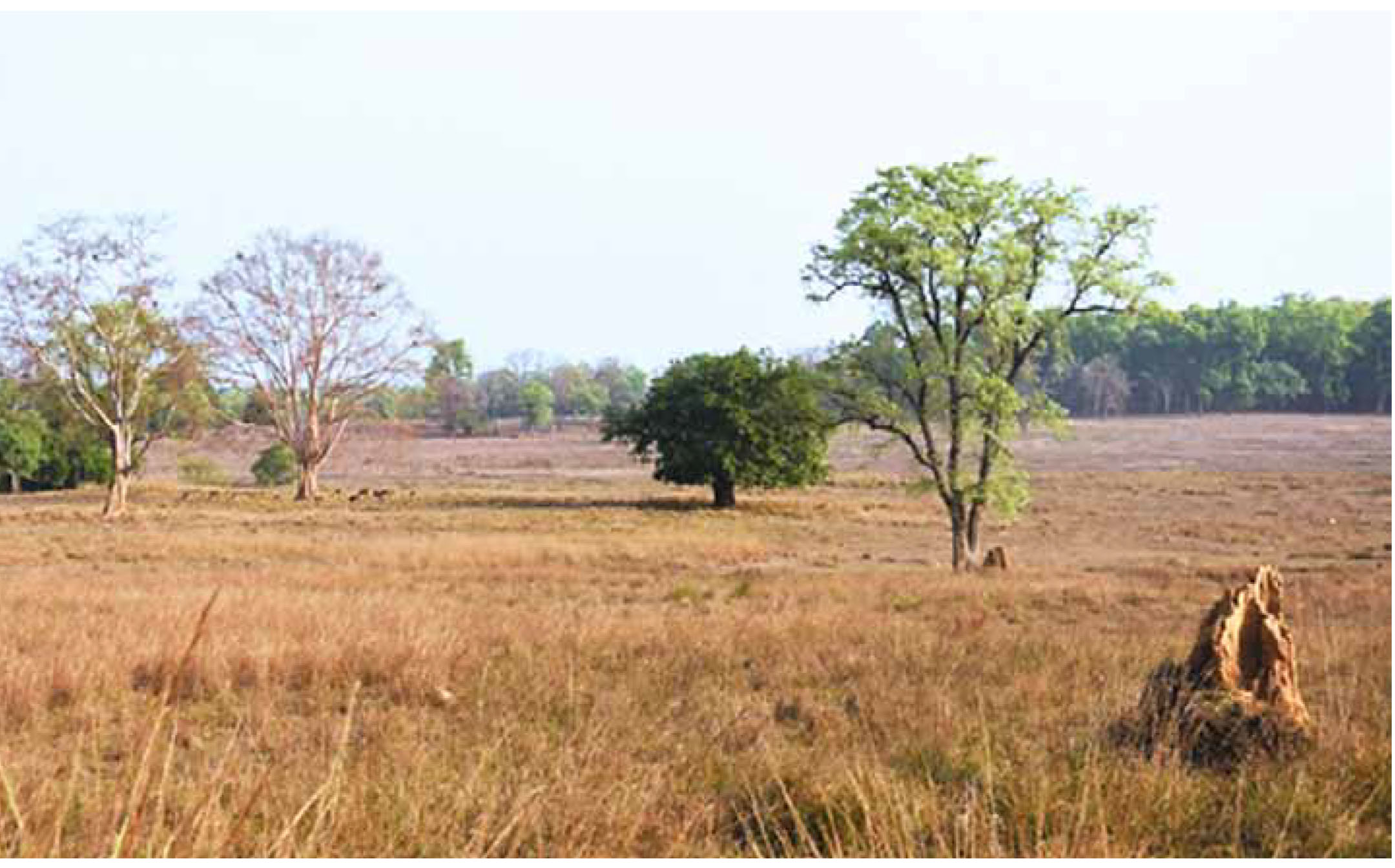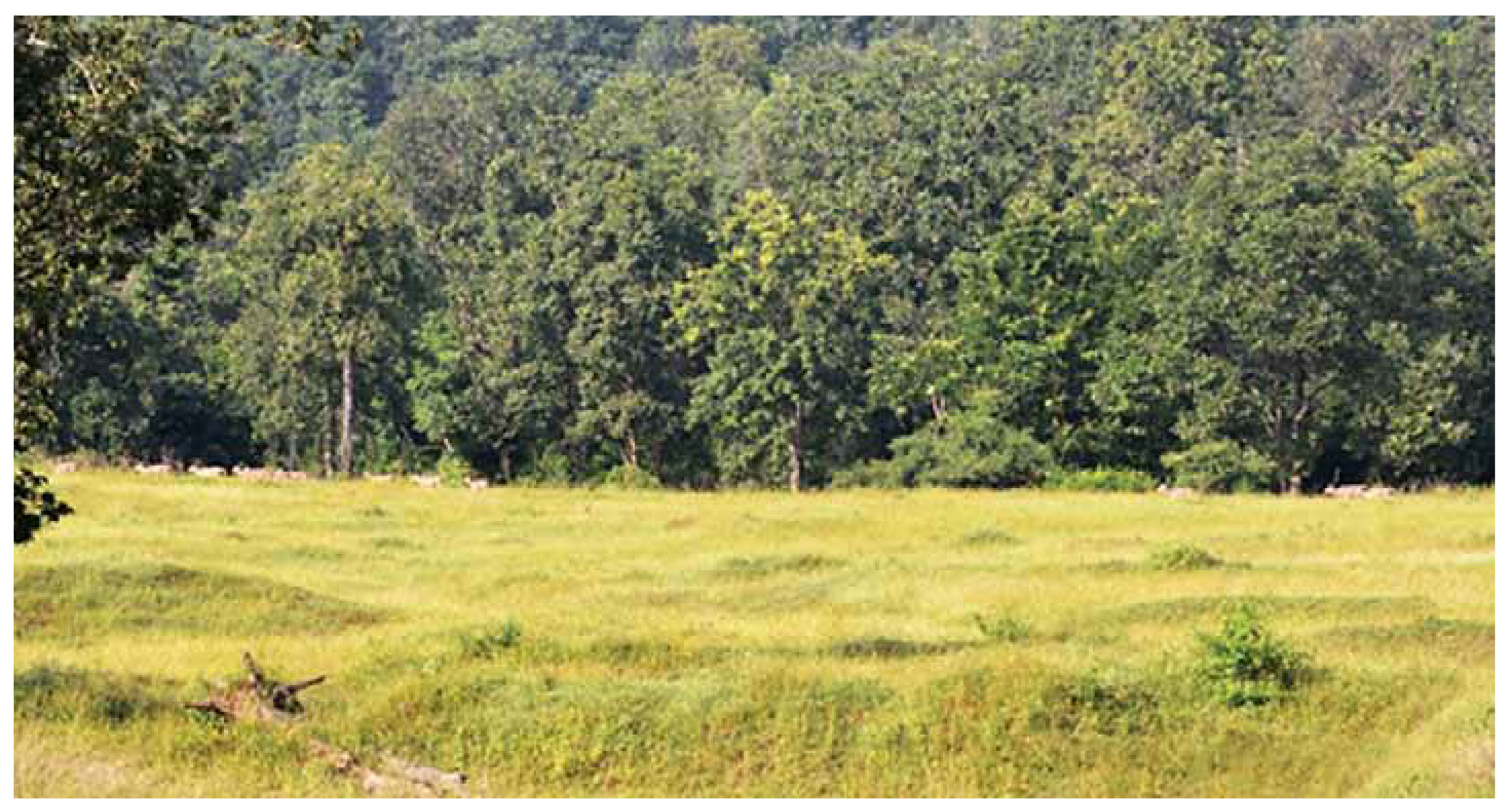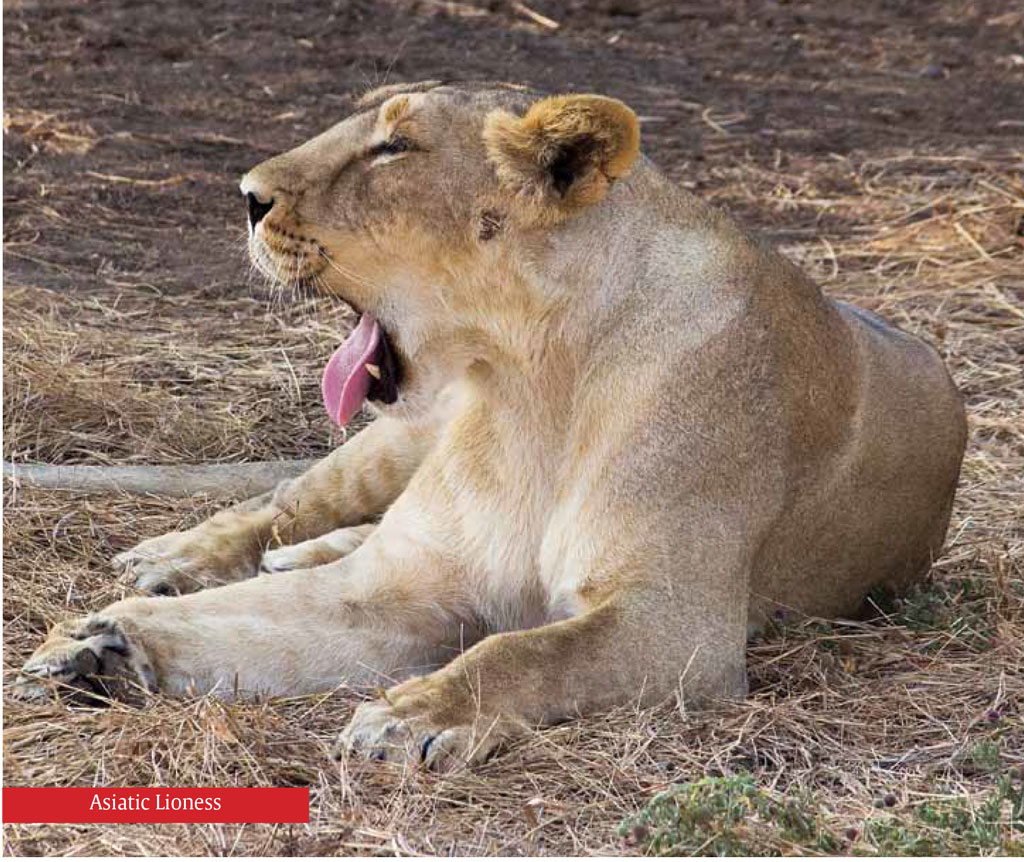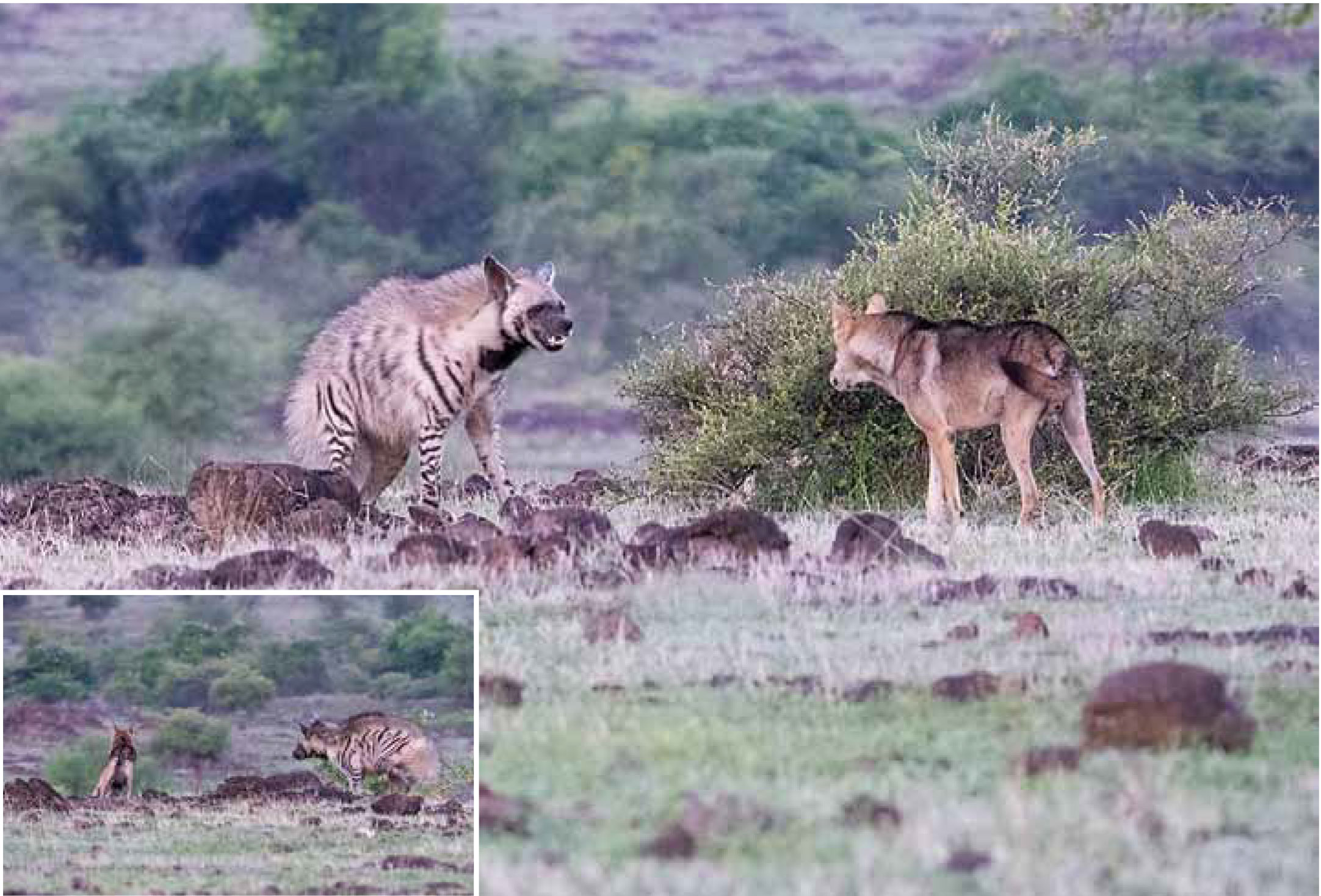
Grasslands inside the core of Kanha National Park and Tiger Reserve during summer
Why is conservation of grasslands in protected landscapes, imperative?
By Ajin Sekhar, M. Rajkumar and Jangam Deepika
Grasslands are open landscapes inhabited by grasses as dominant species, with few or no trees. Grasslands in protected landscapes are critical habitats of innate flora and fauna and maintenance of feeding stock for the increasing population of ungulates in Tiger Reserves is a decisive determinant for the survival of top predators.
The total area under grasslands in India has reduced from 18 million hectares (mha) to 12.3 mha in between 2005 and 2015. Grasslands in the Aravalli range of Rajasthan accounted for severe deterioration, exposing its native wildlife to the peril of extinction. As per the data presented by the Indian Government at the United Nations Convention to Combat Desertification (UNCCD) during the 14th Conference of Parties (COP) at New Delhi, 2019, India witnessed a loss of 31 percent or 5.65 million hectares of its area under grassland ecosystem in the previous decade. This precarious fall in the acreage also accentuates the imminent threat faced by the grassland dependent flora and fauna.
Some of the important fauna are known to be at greater risk due to the loss of grassland habitats, particularly flagship species such as Hard-ground swamp deer (Rucervus duvaucelii) which is endemic to the grasslands of Kanha National Park in Madhya Pradesh. The Great Indian Bustard, one of the heaviest flying birds, stands as critically endangered (CR) by IUCN because of the incessant loss and decline of arid and semi-arid grasslands. The Shola grasslands in the high-altitude region of the Western Ghats are shelter homes to Nilgiri tahr, an endangered mountain ungulate endemic to the Western Ghats. Asiatic Ibex, Kiang or Tibetan Wild Ass, Himalayan Tahr, Swamp deer or barasingha, Kashmir stag or hangul, Great Indian Rhinoceros, Manipur deer or thamin hog deer continue to be in jeopardy due to rampant destruction of grassland ecosystems in different ecoclimatic zones of the country, ranging from the coastal regions to the alpine meadows. Grasslands are also host to wild relatives of the existing crop plants under cultivation. With climate crisis unequivocally changing the crop performance, resilience and adaptability, sustenance of grasslands are of grave significance for the survival of mankind.
Case of Grasslands in Kanha National Park
Grasslands in Tiger Reserves of Madhya Pradesh also host myriad endemic fauna such as the Hard ground swamp deer (Barasingha or Rucervus duvaucelii) in the Kanha National Park, whose survival solely rests on the existence of grasslands. An increase in canopy cover reduces species diversity and composition of ground vegetation, altering the habitat resources in these ecologically critical and fragile systems. The ingression of trees or woody shrubs in grasslands of Tiger Reserves in Madhya Pradesh significantly reduces the feeding stock of ungulates, shrinking the grasslands ecosystem, converting it into woody habitats, posing threats to the survival of existing native and endemic ground flora and wildlife. Sustainable management of grasslands in Tiger Reserves is distinctly different from the management for an open grassland/pasture due to the limits imposed by Wildlife Protection Act, 1972, and minimal anthropogenic pressure.
Remotely sensed data of grasslands in Kanha National Park in 2013 has unveiled that more than 7 tree species have ingressed in the grasslands of the Park such as Terminalia chebula, Syzygium cumini, Lagerstroemia parviflora, Terminalia tomentosa, Shorea robusta, Diosporus melanoxylon, Butea monosperma etc., of which, Butea monosperma was the most dominant (SAC, 2013). Grasslands within the carnivore conservation landscapes need an out of the box solution for restoring its shrinking grasslands for addressing the pertinent questions on continued survival of ungulates (Panwar and Chaudhary, 2019). Detailed investigation on community structure of grasslands inside tiger reserves such as Kanha (Pandey, 1982; Pandey and Hardaha, 2006; Pandey, 2015) suggest that ecological succession for over decades has transmogrified readily palatable grass communities to less palatable grass species due to unregulated grazing and fire. Researchers argue that interspecies competition, excessive grazing by herbivores or ungulates and increased levels of CO2 as potential drivers of the cause, but a detailed investigation in the Central Indian landscape still remains unexplored.
A global scenario
Grasslands around the world are unique habitats for innumerable wild species and also act as biodiversity gene pool for crop improvement programmes. For instance, grasslands in the arid regions of India sustain the ‘blackbuck’, a Schedule I species as per the Wildlife Protection Act, 1972. Grasslands, as the predominant source of palatable fodder for ungulates and live stocks have played a key role in the development of people’s livelihoods for generations (Emanuelsson, 2008). These ecologically dynamic ecosystems occupy around 33 percent of the world’s terrestrial surface (Lemaire et al. 2011) but they continue to be in a perpetual state of deterioration for both documented and unexplored reasons. The main reasons cited for worldwide decline of grasslands include conversion to farm lands for production of fodder crops (Egoh et al. 2016) and, conversely, lack of management and abandonment (Queiroz et al. 2020). The role of grasslands in providing multiple Ecosystem Services (ES) have been well documented by Werling et al. 2014, and Burrascano et al. 2016. Despite having high conservation value, and being highlighted by certain countries such as India, South Africa, United Kingdom, grasslands have remained largely neglected in global policy discussions concerning Ecosystem Services (Bond, 2016). It is imperative to fathom that the ecological significance of grassland ecosystem does not limit to the geographical range alone, but they also affect ecological processes at landscape (e.g., energy flow, nutrient cycling, pollination), regional (e.g., hydro-dynamics), and global scales (e.g., climate regulation).
According to DeLi et al. (2020), for the past several decades, most researches on grassland restoration have focused on region oriented restoration practices rather than the underlying theoretical approach. Corollary to his findings, a new concept of “systematic restoration for degraded grasslands” was put forward that rests on three structural pillars (trophic species and dominant species of plant-animal microbe), self-organized processes (water-nutrient coupling, linkage between aboveground and belowground), and multi-functionality (synergy and stability of grassland multiple functions) for improving the carrying capacity of grasslands.
Grasslands and woody plants may co-exist in a dynamic equilibrium only if all the synergistic and antagonistic factors operate in equilibrium. Such equilibrium prevails only in a thermodynamically closed system or in a theoretically ideal ecosystem which in nature, doesn’t exist. Any directional change in any of the influencers may favor one or more species over other life forms, and may alter the synecology of the landscape. Fowler in 1986 and Casper & Jackson in1997 have reported hetero-specific competition as a key factor for woody ingression. Fall in the frequency of fire incidents in grasslands can be correlated with decreasing biomass productivity of grasslands and increasing density of woody plants (Bahre, 1995). With climate crisis impeding the predictability of any ecological change, pragmatic solutions to assess the probability, extent and rate of shift of habitats/ landscapes may require long term phenological investigation of species under study and characterization of their phylogenetic traits responsible for the adaptive response.
Future research & conservation prospects
Studies on woody plant encroachment and tree ingression into grasslands of different landscapes are a less explored domain in the realm of ecological studies in the country. Most of the studies pertaining to the cause lie skewed towards American and European subcontinent. In India, much of the researches either completed or ongoing in the field of grassland ecology address studies on productivity, species composition, studies on climate change & conversion to farm lands for production of fodder crops and carrying capacity assessment.
Many prudent researchers working in the domain of grassland ecology have attempted to accentuate the possible causes of shrinking grasslands, but most of them remain unexplored, particularly for grasslands under Protected Areas (PA). Moreover, climate crisis has given its clarion call, forecasting a rapid change in the ecological dynamics of both undisturbed and disturbed ecosystems. Hence it is vital to have a deeper understanding of the ecological agents aiding in the shrinking of grasslands and to generate baseline information for understanding the transition from grasslands to woodlands.

Grasslands inside the core of Kanha National Park and Tiger Reserve during post monsoon

Hard-ground swamp deer (Barasingha or Rucervus duvaucelii) in Kanha National Park, whose survival solely rests on the existence of grasslands.

Indian Bison (Bos gaurus), another grassland dependent species in Kanha National Park and Tiger Reserve.
References
Bahre, C.J. (1995). Human impacts on the grasslands of southeastern Arizona. In:
The Desert Grassland. McClaran MP, Van Devender TR, eds. Tucson: Univ. Ariz. Press Bond, W. J. (2016). Ancient grasslands at risk. In Science
Casper, B. B. and Jackson, R. B. (1997). Plant competition underground. Annu. Rev. Ecol. Syst. 28:545-70
de Queiroz, A. C. M., Rabello, A. M., Braga, D. L., Santiago, G. S., Zurlo, L. F., Philpott, S. M., &Ribas, C. R. (2020). Cerrado vegetation types determine how land use impacts ant biodiversity. Biodiversity and Conservation
Egoh, B. N., Bengtsson, J., Lindborg, R., Bullock, J. M., Dixon, A. P., &Rouget, M.(2018). The Importance of Grasslands in Providing Ecosystem Services. InRoutledge Handbook of Ecosystem Services
Emanuelsson, U. (2008). Semi-natural grasslands in Europe today. Biodiversity and Animal Feed – Future Challenges for Grassland Production. Proceedings of the 22nd General Meeting of the European Grassland Federation.
Fowler, N. L. (1986). The role of competition in plant communities in arid and semiarid regions; Ann. Rev. Ecol. Syst. 17 89–110.
Giarrizzo, E., Burrascano, S., &Zavattero, L. (2015). New methodological insights for the assessment of temporal changes in semi-natural dry grasslands plant species composition based on field data from the northern Apennines
Lemaire, G., Hodgson, J., & Chabbi, A. (2011). Grassland productivity and ecosystems services. In Grassland Productivity and Ecosystems Services
Pandey, R. K. 1982. Ecological studies of grassland management of Kanha National Park with special reference to wildlife management. PhD thesis Sagar University, Sagar
Pandey, R. K. and Poonam Hardaha. 2006. Ecological studies on grassland of KanhaNational park with special reference to wildlife management, Project Report State Forest Research Institute, Jabalpur (M.P.)
Pandey, R. K. 2015. Grassland management in wildlife protected areas (PA’s) in India. The XXIII International Grassland Congress (Sustainable use of Grassland Resources for Forage Production, Biodiversity and Environmental Protection) New Delhi, India: November 20 -November 24,2015
Panwar, V. K., & Chaudhary, P. (2019). Major challenges and issues related to wildlife management in Kanha National Park, India.
Ecological Questions.
SAC-ISRO, 2013. Forest Biophysical Characterization and Hydrological Modeling in Madhya Pradesh. Space Applications Centre (SAC), Ahmedabad. SAC/EPSA/ ABHG/EHD/EMEVS/SR/01/2013



